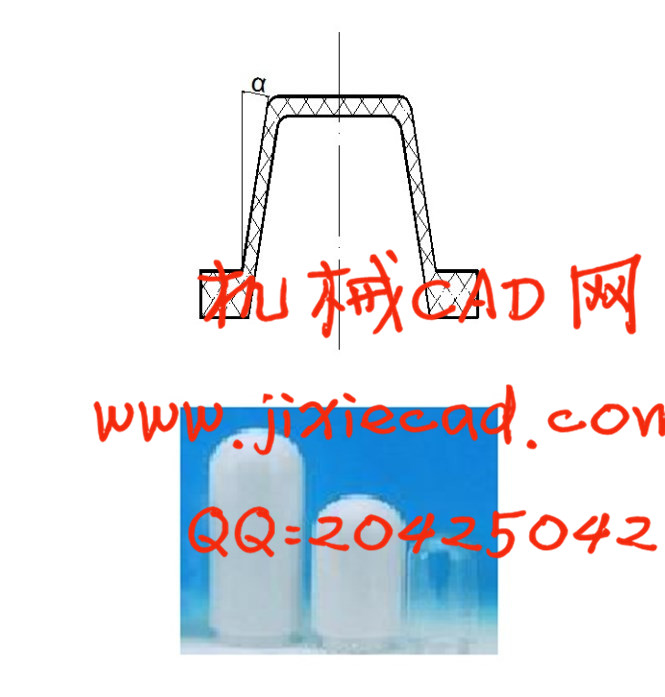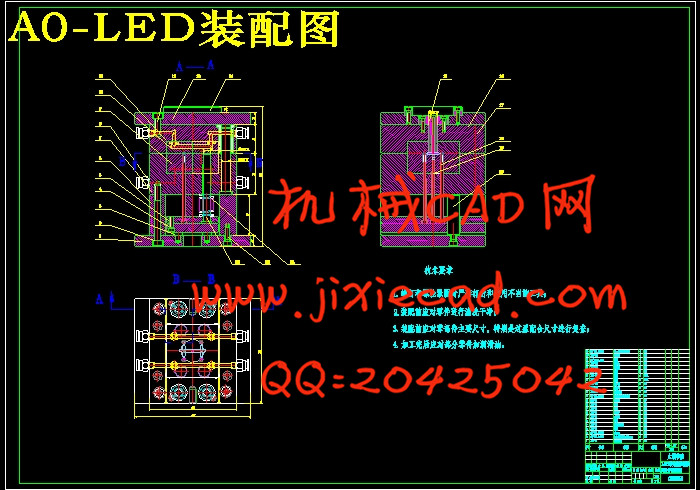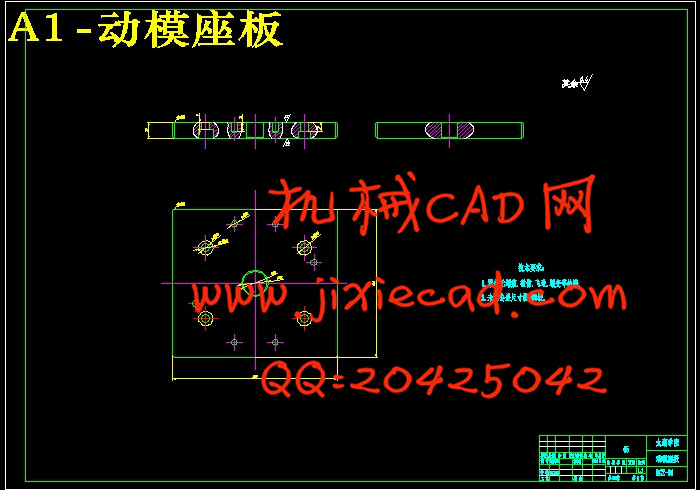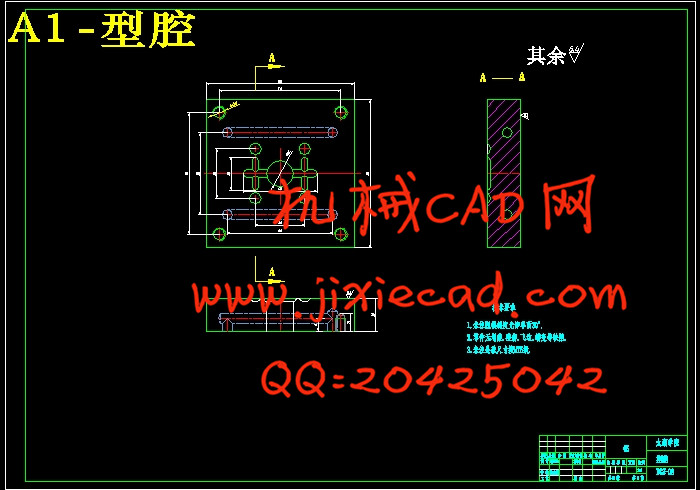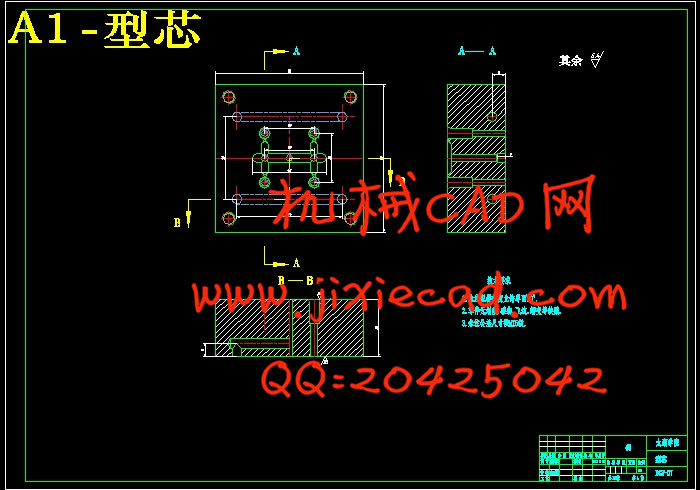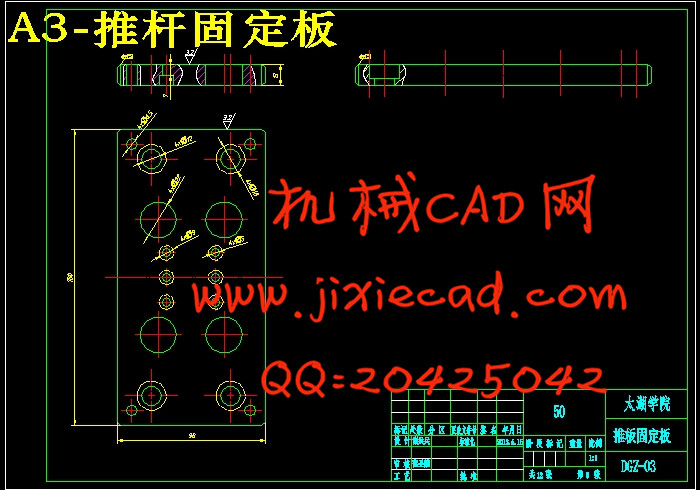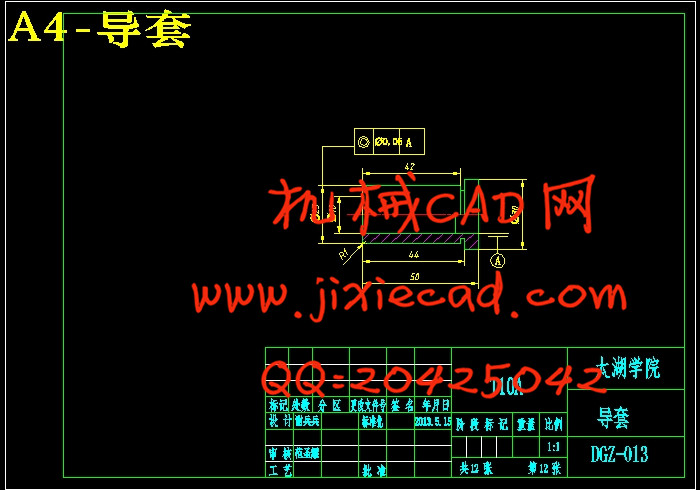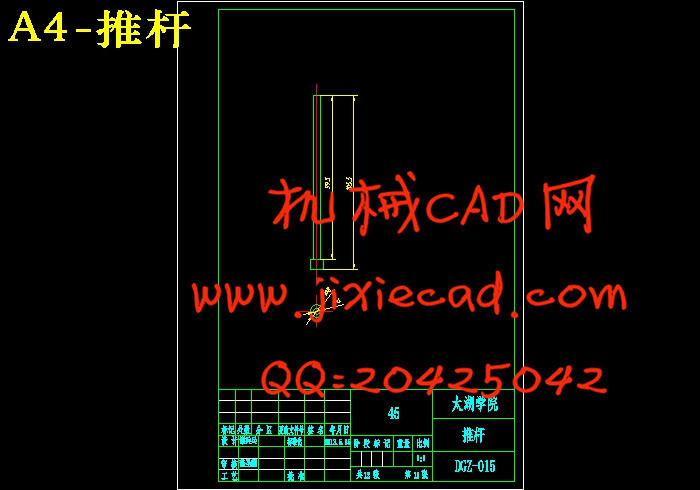设计简介
摘 要
本次毕业设计的题目是LED导光柱注塑模具设计。目前,塑料制件几乎已经进入了一切工业部门以及人民生活的各个领域。随着工业塑料制件和日用塑料制件的品种和需求量日益增加,这些产品更新换代的周期越来越短,因此对塑料的品种、产量和质量都提出了越来越高的要求,这就要求塑料模具的开发、设计与制造的水平也必须越来越高。
在现代塑料成型生产中,塑料制件的质量与塑料成型模具、塑料成型设备和塑料成型工艺这三项因素密切相关。在这三项要素中,塑料成型模具质量最为关键,它最能反映出整个塑料成型生产过程的技术含量及经济效益,它的功能是双重的:赋予塑料熔体以期望的形状、性能、质量;冷却并推出成型的制件。
本文主要内容是对LED导光柱注塑模具的成型部位、浇注系统、导向机构、推出机构、排气系统及冷却系统等进行详细的分析、计算及设计。在设计过程中,我们需要充分考虑塑料变形、收缩率、排气等各种因素的影响,使其满足总体的设计要求。
关键词:LED导光柱;注塑成型;注塑模具;结构设计。
Abstract
My graduation thesis topic is LED guide beam injection mold design. Plastic parts almost go into all industrial sectors and the people of all areas of life today. With the variety and the demand of industrial plastic parts and plastic parts for daily use increasing, the product replacement cycles are getting shorter, which causes higher and higher demands for the plastic varieties, yield and quality, so the development of plastic mold design and manufacturing level should also grow.
In modern injection molding production, the quality of the plastic parts is closely related to the three factors which include plastic mold, plastic molding equipment and plastic molding process. In these three elements, plastic mold quality is the most critical, it is best to reflect the technical content and economic benefits of the plastic molding production process, its function is twofold: making the plastic melt the desired shape, performance, quality ; cooling and launched the formed workpieces.
This article main content is about a detailed analysis, calculation and design of the LED light guide forming parts of injection mould, pouring system, guide mechanism, institution, exhaust system and cooling system, etc. In the design process, we need to fully consider the plastic deformation, shrinkage rate, exhaust and other factors, making it satisfy the requirement of the overall design.
Key words: LED guide beam; Injection molding; Injection mould; structural design.
目 录
本次毕业设计的题目是LED导光柱注塑模具设计。目前,塑料制件几乎已经进入了一切工业部门以及人民生活的各个领域。随着工业塑料制件和日用塑料制件的品种和需求量日益增加,这些产品更新换代的周期越来越短,因此对塑料的品种、产量和质量都提出了越来越高的要求,这就要求塑料模具的开发、设计与制造的水平也必须越来越高。
在现代塑料成型生产中,塑料制件的质量与塑料成型模具、塑料成型设备和塑料成型工艺这三项因素密切相关。在这三项要素中,塑料成型模具质量最为关键,它最能反映出整个塑料成型生产过程的技术含量及经济效益,它的功能是双重的:赋予塑料熔体以期望的形状、性能、质量;冷却并推出成型的制件。
本文主要内容是对LED导光柱注塑模具的成型部位、浇注系统、导向机构、推出机构、排气系统及冷却系统等进行详细的分析、计算及设计。在设计过程中,我们需要充分考虑塑料变形、收缩率、排气等各种因素的影响,使其满足总体的设计要求。
关键词:LED导光柱;注塑成型;注塑模具;结构设计。
Abstract
My graduation thesis topic is LED guide beam injection mold design. Plastic parts almost go into all industrial sectors and the people of all areas of life today. With the variety and the demand of industrial plastic parts and plastic parts for daily use increasing, the product replacement cycles are getting shorter, which causes higher and higher demands for the plastic varieties, yield and quality, so the development of plastic mold design and manufacturing level should also grow.
In modern injection molding production, the quality of the plastic parts is closely related to the three factors which include plastic mold, plastic molding equipment and plastic molding process. In these three elements, plastic mold quality is the most critical, it is best to reflect the technical content and economic benefits of the plastic molding production process, its function is twofold: making the plastic melt the desired shape, performance, quality ; cooling and launched the formed workpieces.
This article main content is about a detailed analysis, calculation and design of the LED light guide forming parts of injection mould, pouring system, guide mechanism, institution, exhaust system and cooling system, etc. In the design process, we need to fully consider the plastic deformation, shrinkage rate, exhaust and other factors, making it satisfy the requirement of the overall design.
Key words: LED guide beam; Injection molding; Injection mould; structural design.
目 录
摘 要 III
Abstract IV
目 录 V
1 绪论 1
1.1 本课题的研究内容和意义 1
1.1.1 本课题的研究内容 1
1.1.2 本课题的意义 2
1.2 国内外的发展概况 3
1.2.1 注塑模具国外研究现状 3
1.2.2 注塑模具国内研究现状 3
1.2.3 注塑模具发展趋势 4
1.3 本课题应达到的要求 4
2 塑料制件的工艺性 5
2.1 塑料的基本组成及分类 5
2.2 塑件材料的物理性质及其用途和成型特点 8
2.2.1 塑件材料物理性质 8
2.2.2 主要用途以及成型特点 9
2.3 LED导光柱的几何结构 9
2.4 LED导光柱相关数据的确定 12
2.4.1 塑件厚壁的确定 12
2.4.2 脱模斜度的确定 13
2.4.3 圆角的的确定 13
2.4.4 LED导光柱的体积及质量 13
3 注射成型原理以及注塑机的选择 14
3.1 注射成型原理 14
3.1.1 柱塞式注塑机注射成型原理 14
3.1.2 螺杆式注塑机注射成型原理 14
3.2 注射成型工艺 16
3.2.1 成型前的准备 16
3.2.2 注射过程 16
3.2.3 塑件的后处理 16
3.3 注塑机的选择 17
3.3.1 注塑机的分类 17
3.3.2 注塑机的类型选择 18
3.3.3 注塑机参数的校核 19
4 分型面的选择与浇注系统的设计 21
4.1 分型面及其选择 21
4.1.1 型腔数目的确定和布置 21
4.1.2 分型面的形式 22
4.1.3 分型面的设计原则 22
4.2 浇注系统的设计 22
4.2.1 普通浇注系统设计的基本原则 23
4.2.2 主流道的设计 23
4.2.3 分流道的设计 24
4.2.4 浇口的设计 25
5 成型零部件设计 27
5.1 成型零件的结构设计 27
5.1.1 凹模的结构分析 27
5.1.2 型芯和成型杆的结构分析 27
5.2 影响塑料尺寸精度的主要因素 27
5.2.1 塑料制品的成型收缩 27
5.2.2 模具成型零件的制造公差δz 28
5.2.3 模具成型零件的磨损δc 28
5.3 成型零件的工作尺寸的计算 28
6 导向机构和推出机构的设计 31
6.1 导向机构的设计 31
6.1.1 导向机构的功用 31
6.1.2 导向装置类型 31
6.1.3 导柱导向机构 31
6.1.4 导套的设计 32
6.2 推出机构的设计 33
6.2.1 推出机构的结构组成 33
6.2.2 推出机构的设计原则 33
6.2.3 顶出部件 34
6.2.4 复位部件 35
6.2.5 导向部件和限位零件 35
7 其它部件的设计 36
7.1 温度调节系统的设计 36
7.1.1 冷却系统的设计原则 36
7.1.2 冷却系统的计算 36
7.2 模架的设计 38
7.2.1 模板的布置 38
7.2.2 模板的标准化 38
7.3 排气系统的设计 39
7.3.1 排气槽的位置及作用 40
7.3.2 排气方式 40
7.3.3 溢流槽 40
8 结论 41
致 谢 42
参考文献 43
Abstract IV
目 录 V
1 绪论 1
1.1 本课题的研究内容和意义 1
1.1.1 本课题的研究内容 1
1.1.2 本课题的意义 2
1.2 国内外的发展概况 3
1.2.1 注塑模具国外研究现状 3
1.2.2 注塑模具国内研究现状 3
1.2.3 注塑模具发展趋势 4
1.3 本课题应达到的要求 4
2 塑料制件的工艺性 5
2.1 塑料的基本组成及分类 5
2.2 塑件材料的物理性质及其用途和成型特点 8
2.2.1 塑件材料物理性质 8
2.2.2 主要用途以及成型特点 9
2.3 LED导光柱的几何结构 9
2.4 LED导光柱相关数据的确定 12
2.4.1 塑件厚壁的确定 12
2.4.2 脱模斜度的确定 13
2.4.3 圆角的的确定 13
2.4.4 LED导光柱的体积及质量 13
3 注射成型原理以及注塑机的选择 14
3.1 注射成型原理 14
3.1.1 柱塞式注塑机注射成型原理 14
3.1.2 螺杆式注塑机注射成型原理 14
3.2 注射成型工艺 16
3.2.1 成型前的准备 16
3.2.2 注射过程 16
3.2.3 塑件的后处理 16
3.3 注塑机的选择 17
3.3.1 注塑机的分类 17
3.3.2 注塑机的类型选择 18
3.3.3 注塑机参数的校核 19
4 分型面的选择与浇注系统的设计 21
4.1 分型面及其选择 21
4.1.1 型腔数目的确定和布置 21
4.1.2 分型面的形式 22
4.1.3 分型面的设计原则 22
4.2 浇注系统的设计 22
4.2.1 普通浇注系统设计的基本原则 23
4.2.2 主流道的设计 23
4.2.3 分流道的设计 24
4.2.4 浇口的设计 25
5 成型零部件设计 27
5.1 成型零件的结构设计 27
5.1.1 凹模的结构分析 27
5.1.2 型芯和成型杆的结构分析 27
5.2 影响塑料尺寸精度的主要因素 27
5.2.1 塑料制品的成型收缩 27
5.2.2 模具成型零件的制造公差δz 28
5.2.3 模具成型零件的磨损δc 28
5.3 成型零件的工作尺寸的计算 28
6 导向机构和推出机构的设计 31
6.1 导向机构的设计 31
6.1.1 导向机构的功用 31
6.1.2 导向装置类型 31
6.1.3 导柱导向机构 31
6.1.4 导套的设计 32
6.2 推出机构的设计 33
6.2.1 推出机构的结构组成 33
6.2.2 推出机构的设计原则 33
6.2.3 顶出部件 34
6.2.4 复位部件 35
6.2.5 导向部件和限位零件 35
7 其它部件的设计 36
7.1 温度调节系统的设计 36
7.1.1 冷却系统的设计原则 36
7.1.2 冷却系统的计算 36
7.2 模架的设计 38
7.2.1 模板的布置 38
7.2.2 模板的标准化 38
7.3 排气系统的设计 39
7.3.1 排气槽的位置及作用 40
7.3.2 排气方式 40
7.3.3 溢流槽 40
8 结论 41
致 谢 42
参考文献 43


